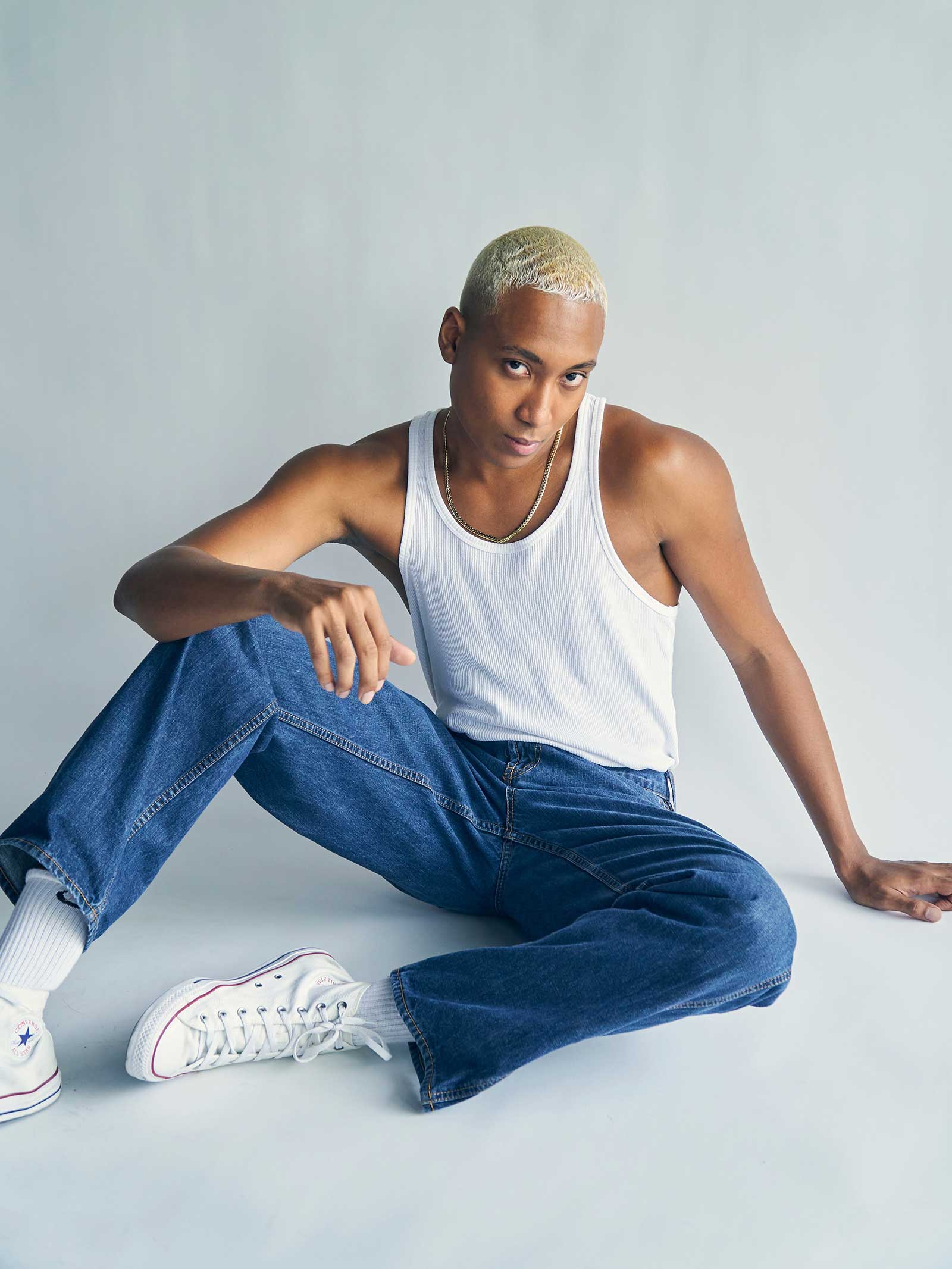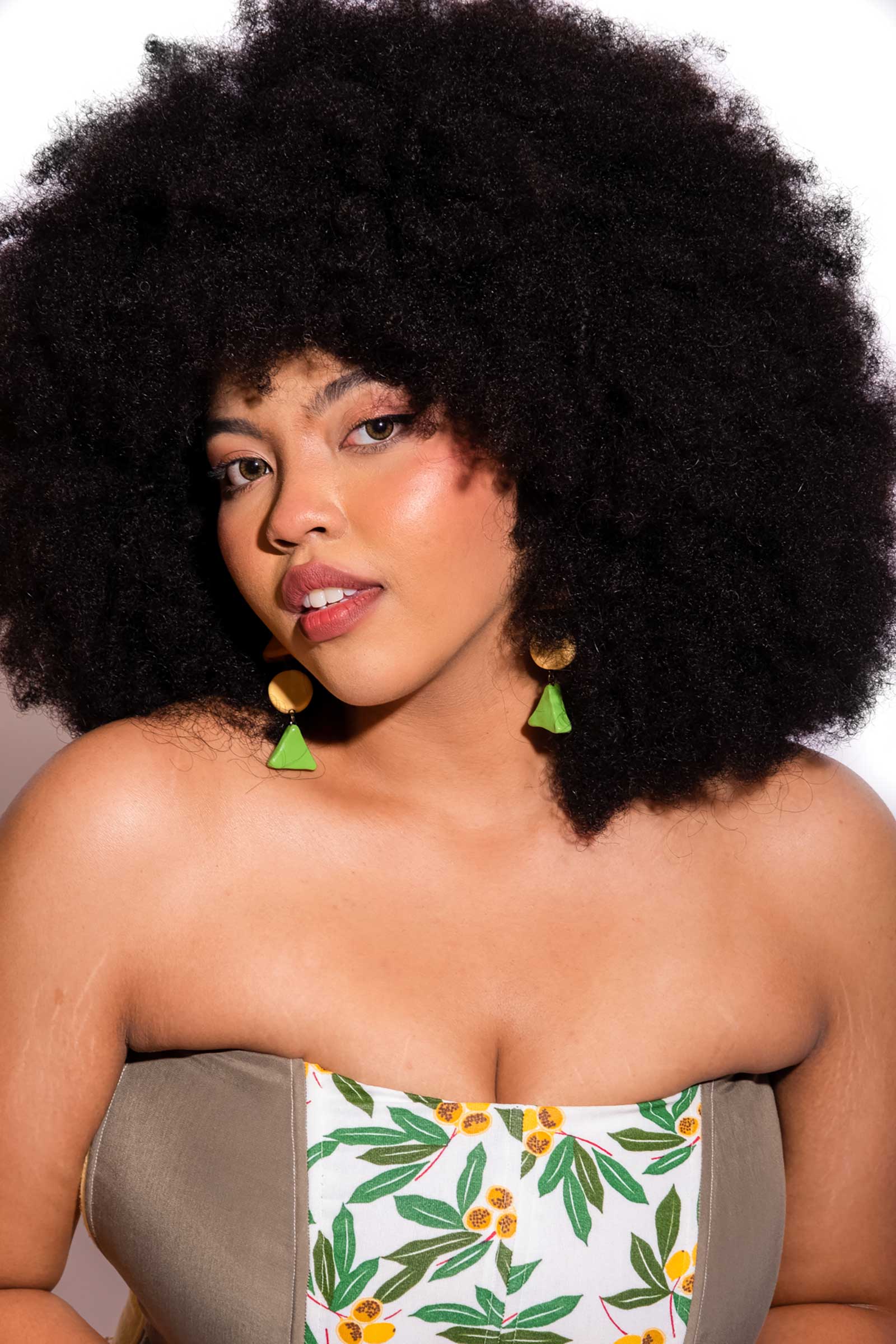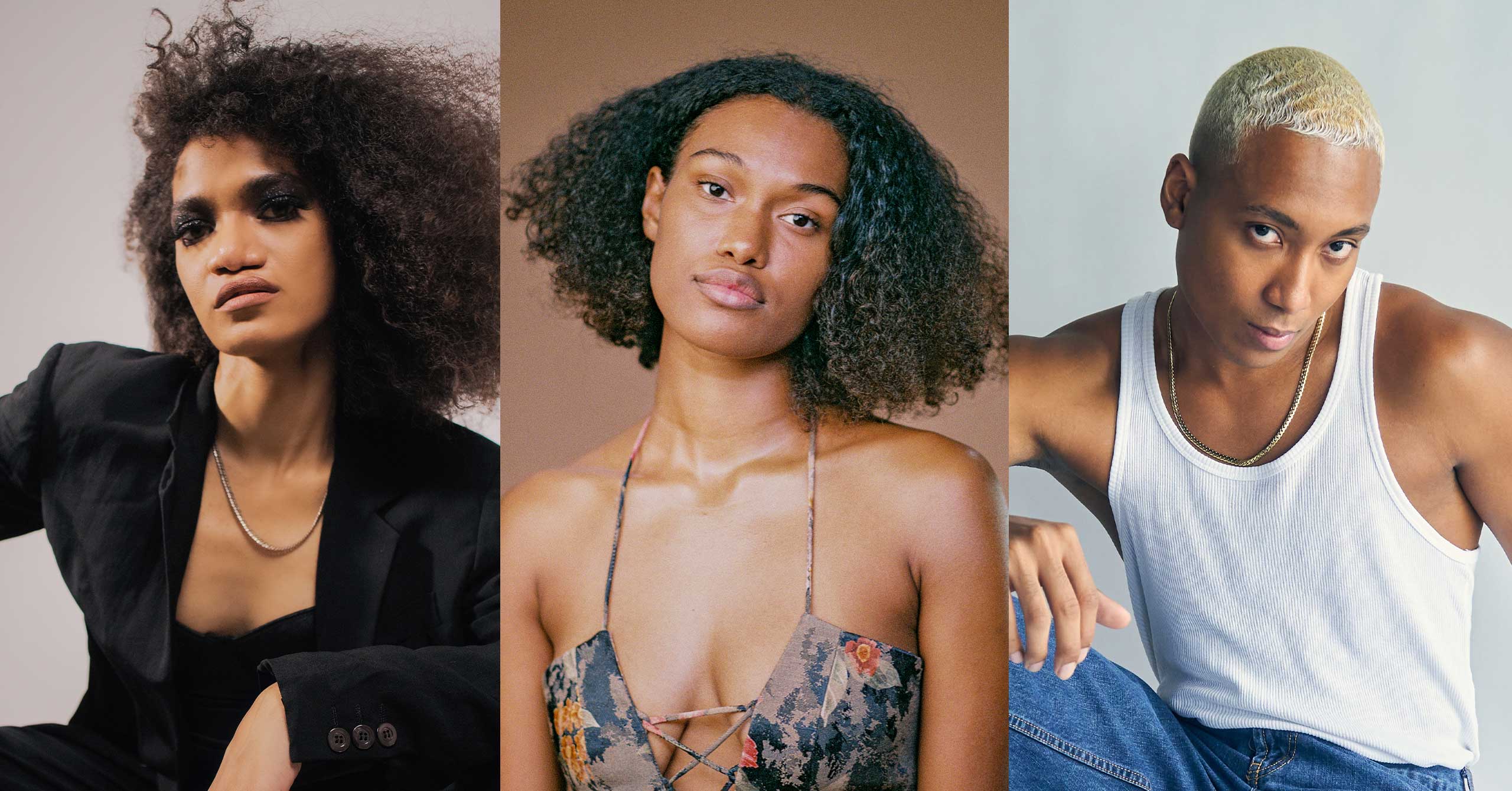The Philippines boasts a rich tapestry of ethnic groups, contributing to a diverse array of cultures within the nation. However, this diversity often remains overlooked in mainstream media, the fashion scene, and the entertainment industry. These negative representations of darker-skinned Filipinos are deeply rooted in the Philippines’ struggle with colorism and the perpetuation of rigid beauty standards, a legacy of centuries of Western colonization. However, there are signs of progress towards more inclusive representation in the country.
Vogue Philippines recently engaged in conversations with four emerging Afro-Filipino models, shedding light on their experiences as individuals of mixed heritage and dark complexion in the fashion industry.
Chumason Njigha, Model/Athlete

Athlete and model Chumason Njigha didn’t imagine he would end up pursuing modeling. As he grew up self-conscious of his looks due to his features and mixed-race background. “Growing up, I always knew that I stood out from all of my peers,” shares the 24-year-old. “I was tall, and I had dark skin and curly hair. I honestly felt like a walking exhibit during my childhood.”
The half-Nigerian and Filipino model explains that the media’s tendency to only show representation of lighter-skinned people, initially made him weary of tapping into the fashion industry.
“Something very prominent in Philippine media is how they favor lighter-skinned people,” he says. “All the main characters in TV shows and the models in magazines would have lighter skin tones. Even skincare products in the local market are very focused on skin whitening.”
His process of growing to self-acceptance expanded over the pandemic and the aftermath of the Black Lives Matter Movement revival. During this time he did a lot of internal reflections, which helped him rearrange his outlook on life.
“I’ve always set my goal to how far I feel society will let me go, but now I’ve learned I have every right to be happy and successful as long as I put in the hard work and I love what I am doing,” he expresses. “Although I felt like the cards were against me in this industry, I’ve always had my family and friends to constantly remind me that I am loved.”
He has gone on to be featured in campaigns with Adidas Philippines and has walked the runway for local designers like Cruz. Although he has been able to be booked for opportunities he is still unsure if it’s because there has been a huge change in the industry or if companies are just using him to appear more diverse.
Despite the ups and downs of being in the fashion industry, the young creative is hopeful he can become an inspiration to others.
“Hopefully, I can be that person to other young individuals trying to find confidence and trying to find a way to love themselves amidst everything society throws at them.”
Kahlea Belonia, Model/Painter

Since starting her career in modeling some years ago, Kahlea Belonia has found her mixed-race heritage has given her a unique edge. “Companies look for different races all the time now which is very good. So I see my physical difference as another good reason to be confident,” she shares.
Belonia came to the Philippines as a young girl and found it hard to adjust due to the culture clash but soon found her home in the Philippines. She now feels a strong sense of pride being both Filipina and African-American, as it ties to two rich cultures and histories.
“I love both Philippine history and African-American history,” says Belonia. “Being able to live with these roots has taught me to accept that this is who I am… I identify myself as Filipina-Black American, and I see that as an overarching of my identity.”
Over the last several years, she has learned to embrace her own beauty which has helped propel her modeling career forward. “Some people will stare, but for me, this doesn’t matter because I have embraced my space, and my uniqueness.”
Though the biggest accomplishment in her life so far has been her transition into motherhood. “Motherhood made a big impact on my life, especially because I experienced it at a young age. At first, I was surprised, it led me to grow more and learn from the experience. I became practical and patient,” says Belonia.
Belonia remains optimistic about the growing representation in the Filipino media and believes this will help open up the conversation surrounding discrimination.
“I think that as years go by, mixed women have more courage to speak up, and that’s amazing,” she explains. “Filipina-Americans have been given chances to represent one another in the media, but I think we still have a long way to go.”
Jeska Reyna, Model/ Doula

Being both plus-size and a mixed Filipina woman of African heritage has put Jeska Reyna at the opposite end of the spectrum when it comes to beauty standards in the Philippines. Reyna is never certain of the responses she will elicit from people within the fashion industry. “Meeting different people from the modeling industry warrants different responses,” she says. “Some positive and welcoming, others negative and alienating. It has always been common for me to encounter back-handed compliments.”
She finds that advertisements looking for plus-size models can sometimes be derogatory in nature. “Casting briefs are rampant with [descriptions] like ‘plus size but must be pretty and not scary looking’ or ‘Filipino looking but must be aspirational’, “explains the Filipina and Nigerian model. “There is even a common class system [in the modeling industry]. “Class A” is often defined as tall, thin, fair-skinned and sometimes, the higher class the more you get paid. “
Though being mixed race has impacted life in several ways she notes that growing up she benefited from her complexion being lighter than many other Afro-Filipinos. Due to this colorism did not impact her as strongly as other forms of discrimination like fatphobia, texturism, ableism, and racism, which she describes as a “cumulative minority burden.”
“Texturism is as worse as colorism is in the Philippines. People are shocked that I intentionally keep my hair the way it is, some would also assume I must not want to keep it this way. This explains why I often get unsolicited advice on how I should change my hair to make it less Afroish.”
Reyna aspires to push past perpetuating tokenism as a plus-size and mixed-race model. She hopes to instead create authentic inclusivity and work with brands that share a similar vision. The model fondly remembers the time when she auditioned for a clothing brand and they ended up adding a wider size range because they realized there were body types like hers.
“The more exposure my body gets, the more the body variations that I have are normalized/neutralized because it is no longer foreign to the audience,” she says. “Because they’ve seen it in me, they now know that it exists. Sometimes, lack of exposure is the problem, and all we have to do is interact more to embrace change and diversify within our communities.”
Mary Jane Brown, Model

Finding opportunities in modeling for Filipina and African-American model, Mary Jane Brown has not been easy. Brown shares that she isn’t picked for many of the beauty campaigns or other projects she auditions for due to her unconventional features. She was born with a cleft palate and had surgery for it but it still resulted in her having a facial difference.
When Brown was younger having a facial difference made her have low-self esteem and affected her overall confidence.
“I was ashamed and always questioning God and had a lack of confidence because of my cleft palate”, Brown says. “I thought I’m the unluckiest person on earth.”
Her desire to fit into beauty standards has in the past led her down the routine of using dangerous whitening products.“I used to use bleaching products because I wanted to lighten my skin and my perspective at that time was [that the products] would make me look pretty and that no one would bully me anymore,” says Brown.
She has since found confidence in her features and through modeling, and believes through modeling she can showcase what diversity in beauty looks like.
“Having a facial difference has made me strong and I’ve learned to stand up for myself, especially to those who tried to bully me,” she shares. “So I believe being unique and different has its own purpose. You just need to figure it out.”
